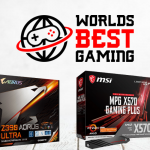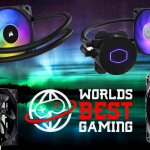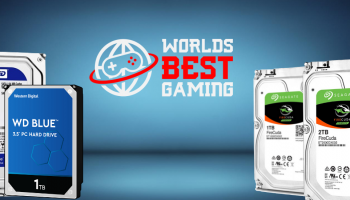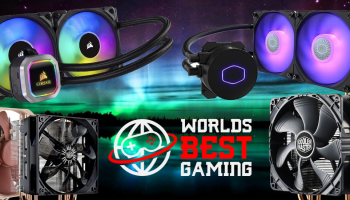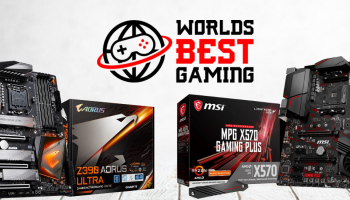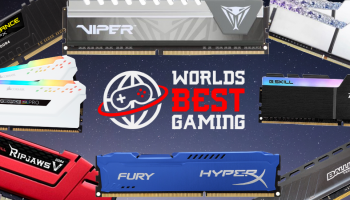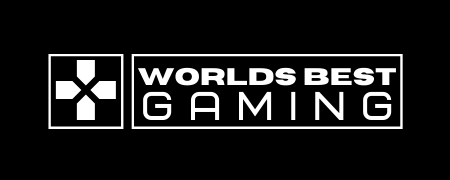Best SSD’s of 2021
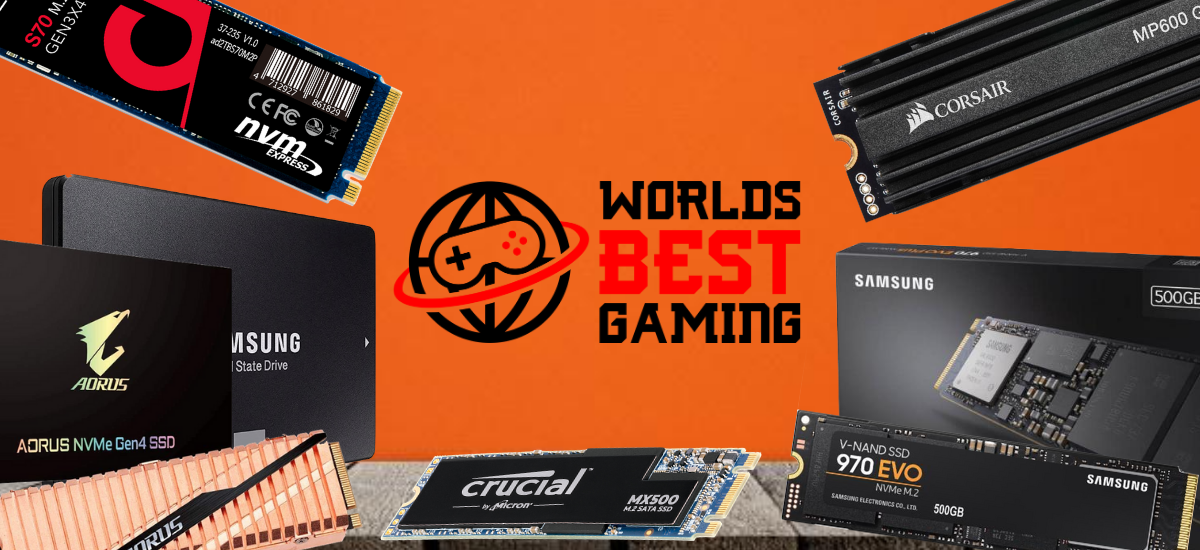
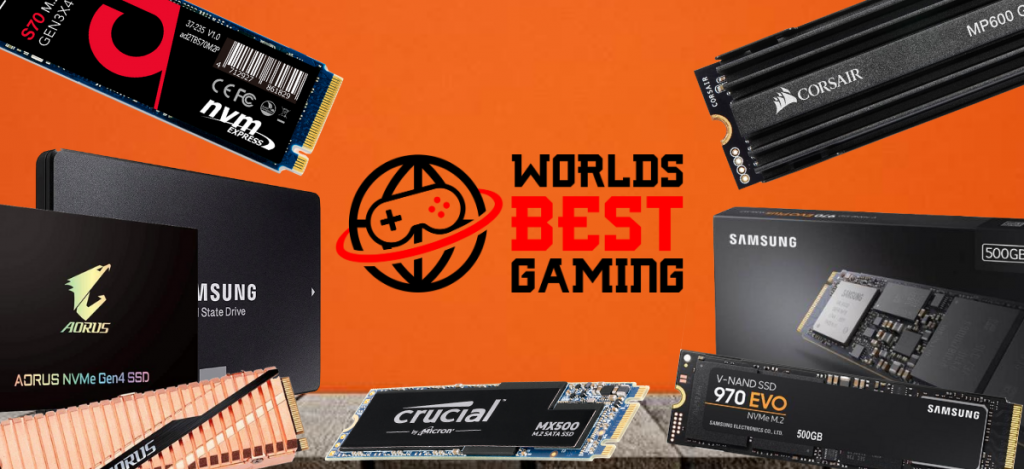
When it comes to PC gaming, the biggest leap in frame rates may come from the GPU but nothing feels smoother than jumping from an HDD to that drop-dead gorgeous SSD.
The Solid State Drive, a nefarious standard in PC Gaming that few understand but most know they need. Chances are your old HDD is being a nice little bottleneck, keeping your game load times long and at worst even dropping some frames here and there.
Realistically, for most of us trading an HDD in for an SSD will make our computer feel new. Like a 21st century device rather than an ancient machine gasping for breath as it loads Windows 95. Boot up is faster, games load faster, downloading is faster. We mean way faster. This is because your new SSD will give information to your lazy good for nothin’ CPU at a far faster rate. Upgrading to an SSD is a huge leap in performance for daily computer tasks that involve loading. It’s not magic, I.E. it won’t make an outdated CPU run better and won’t solve the problems incurred by having only 2GB of RAM, but it may be the cheapest solution for the best performance boost you’ll find.
Today’s hardware roundup will walk you through the best SSD options of 2020 and some of our favorite brands while our tech guide will go further, teaching you about the dangers of cheap knock-off SSD technology. Oooo! Spooky! If you want to know more about all things SSD, worlds best gaming has you covered.
Why go Solid State?
Speed baby! Speed! SSD builds load game worlds far faster than other builds. Your games will most likely have the same FPS, but before despairing, realize that you’ll make up for the lack of frame boosting by increased time actually spent gaming. Games like Fallout are notorious for sicking 40-second load screens on you like a pack of Joe Exotics spicy pets. It’s obnoxious. And Rust has been seen to exceed three minutes! An SSD will bring that load time down tremendously. And not just that, audio, video, so many other aspects of using your PC will start to feel quicker because the CPU will no longer be drinking Mojitos waiting for data to arrive. Rather it’ll be pushed to the max because data flows quicker and faster.
Below you’ll find our favorite SSD solutions for 2020 and as always, hit us up if you have questions because to hear from you!
Listen, we could describe each SSD with glowing puffy words but the reality is some are just bigger, cheaper, faster, and better. We picked these because they rock. They’re solid products. And the clear winner is going to be faster or cheaper or better in quality. Don’t get lost looking through 100,000 similar products. These are some of the best options around and get the job done you want as a PC Gamer.
Note that all of these products come in larger and smaller sizes with the relative change in price, we recommend 500GB SSD though for Gamers.
OUR FAV – SAMSUNG 970 EVO
Features
500GB
M.2 NVMe form factor
MLC
3500Mb/s and 2700MB/s Read and Write speeds
Our Take
Samsung has proven itself to be an industry leader with SSD and constantly brings awesome products to the market. Running at 3500MB/s read and 2700MB/s write speeds. This baby brings all the blazing fast speed you’ll want and has room for a ton of games. As an M.2 NVMe drive, the Samsung 970 EVO will probably reach peak speeds while having a much longer shelf-life than competing brands hucking low-quality QLC models (Check our tech guide to see why this matters). It’s the best balance of speed and quality while costing a bit more than some of the downgraded SSD options.
back to menu ↑RUNNER UP – SAMSUNG 860 EVO
Features
500GB
SATA form factor
MLC
550Mb/s and 520Mb/s Read and Write
Our Take
If you had told me a couple of years ago that solid high-quality Samsung SSD would be at these price points for this many gigs, I’d… well I’d probably believe you because technology does that but it’s still frickin’ incredible. Not too long ago it’d cost a fortune for the speed and quality of this SSD and now you get it in a small SATA form factor. Granted it’s not M.2 NVMe but remember the speed difference between SSD and HDD is so great that M.2 NVMe is almost currently overkill. Everything will boot fast as the dickens. In fact, this very article is being written on a beast of a gaming rig that picked this SSD as the best option among all the champs. The Samsung 860 EVO is sort of the best standard SSD for those of us who purely game. It does the job, is cheap enough to obtain, and will last long enough to get your moneys worth.
back to menu ↑BUDGET PICK – CRUCIAL MX500 SSD
Features
500GB
Cheapest good SSD around
TLC quality
SATA form factor
Our Take
Our Take
Crucial is probably one of our favorite budget SSD providers. If you see a 1TB SSD for dirt cheap, it’s probably QLC and too good to be true, but Crucial manages to toe the line with TLC quality SSD at cheap prices. They’re fast, reliable, and just a good buy if you are sick of waiting for worlds to load every time Rockstar makes another 100-hour long game. SSD make such a huge difference that even budget builds should consider them. You can even drop down to a 250GB to shave off $20 but we would recommend sticking with 500GB if you are serious about gaming. Ultimately don’t go lower in quality as it’ll just be a waste of cash (here’s looking at you QLC dirtbag Intel).
back to menu ↑HIGH END – CORSAIR GEN4 SERIES 500GB
Features
Cool jet black metal design
500GB
Insane read and write speeds
PCIe 4.0 ready
M.2 NVMe
Our Take
This guy looks like military hardware so that’s a perk. The Corsair Gen4 SSD is like the more powerful AORUS cousin, using newer forms of PCIe. That means you may need to consider your MOBO and whether or not it’ll need an upgrade. Interestingly the newer SSD all seem to have added heat sinks due to the raw power that courses through the veins of these incredible components. It’s not really too obvious whether that’s necessary, SSD don’t run as hot as a CPU for instance but it is a nice touch. This SSD is a beast and has quite a bit of power. While AORUD barely beats it as read/write speeds, what you are getting is top of the line storage technology. It’ll basically be a figure piece in your machine and isn’t going away anytime soon. Do be aware new PCIe requirements mean you’ll need to pay attention to the Mobo this has.
back to menu ↑PREMIUM PICK – AORUS NVME GEN4 SSD
Our Take
If your M.2 NVMe has a heatsink, you know it means business. While PCIe 4.0 isn’t widely used, Solid-State Drive manufacturers are preparing with new cards that reach speeds as fast as 5000MB/s. That’s just irresponsible levels of data storage. Incredible. This isn’t the cheapest option especially since you’ll find yourself with less storage space than you could have with other traditional M.2 cards but it is hecka fast. Like really really fast. Once you have one of these puppies, never blame the hard drive again. For it is madness. Your storage is not a problem. While we put this in the premium dream category, a couple of years ago, a much slower non-M.2 drive would have cost the same so it’s actually somewhat affordable for the enthusiast. Just be aware that you may not notice the difference at these speeds until the software we use starts requiring much more data at a faster speed. Note that this pretty similar to the Corsair SSD but bumps up the size a bit. You’d be blown away by either one. We recommend this for those using 4K media and editing a lot although it’s important to know when to use and not use an SSD for storage.
Everything you need to know about Solid State Drives
For gaming, an SSD may smooth over things immensely
Ever load up a game with huge open-worlds, make a cup of coffee, use the toilet, read the newspaper, come back and see the game is hardly loaded yet? There can be any number of culprits but open-world games thrive on pulling tons of data up at once. Pulling this data from an aging HDD might cause all number of problems.
Perhaps a cinematic starts and you hear clicking, a big whir, framerates dip, audio plays and it feels like the cinematic is buffering. Then after these hiccups, it runs smoothly. You miss a few seconds of the cinematic and then go back to a long loading screen. We might blame the game developer without realizing that the hard drive you have just isn’t cutting the mustard.
This Video compares different hard drive types and gives you a good example of how much it actually does impact speed when gaming. It’s a big deal!
What is the difference between an SSD and an HDD? And what the heck is an SSHD!
To understand this, we need to understand how data is stored!
But for you TLDR crowd, HDD are mechanical, SSD are electronic, and SSHD are a hybrid!
Understanding Data Storage
In his famous book Code: The Hidden Language of Computer Hardware and Software, Charles Petzgold uses the classic story of Paul Revere to help us understand how information is stored in code.
Imagine you have a square and you want to store information in the square. You could put a mark, like an x in that square. You’ve suddenly made two different forms of information,
- square with no x
- square with x
Hooray! If we add an additional square, our options grow exponentially.
We can have,
- two squares with no x
- two squares with one x
- two squares with two x
- and if you can tell the boxes apart, you can squeeze more information in.
The story of Paul Revere does this with lanterns. If there is one lantern, the British are coming by land. If there are two lanterns, they are coming by Sea. Technically to make this code, you would need two lanterns with four possible combinations.
- No Lanterns lit
- One lanterns lit (Two possible combinations)
- Two lanterns lit
In essence, Paul Revere is coding information into his complex lantern based language. This is what information storage is all about. Storage solutions take information and store it using various methods, such as a positive and negative magnetic value. A 1 or a 0. These form complex strings of information that have numerous values or meanings.
Storage drives are essentially storing a bunch of information and all the other spicy components of the computer pull this information up and read it. Machines are very literate in computer terms, and the slightest deviation confuses them. They are also incredibly fast! Just slurping down hundreds of thousands of 1’s and 0’s at insane speeds. But with today’s demand for information and programs increasing in size it’s a huge need. Fallout 4 will take way longer to load than Doom 2. And as load screens fade and the flavor of AAA games changes, storage speed is necessary. Today’s SSD run into the opposite of a bottleneck problem though, they’re so wildly efficient most RAM and CPU combinations can’t keep up. This is good though because a simple upgrade may abolish the bottleneck that storage has in your rig.
How does this remotely help me understand hard drives?
Now that we understand a bit better how data is stored, it is easier to understand why the old HDD is different from an SSD. Keep in mind these are just a couple of the MANY solutions available as well.
HDD
The Hard Disk drive is a storage solution that uses mechanical means to store information. A spinning magnetic disk records information and then this information is accessed quickly by spinning the disk at a high RPM. If you’ve ever wondered what defragging a computer is, it’s the process of taking information on this spinning disk and organizing it to be more efficiently stored and spread about.
Since the Hard Disk Drive is mechanical, it is prone to failure when hit or moved too quickly (After all it’s spinning a disk around 7200 RPM when accessing information). It’s cheap to make, lasts a long-time, and in general, is a great solution. Modern computers have begun to suck information in so quickly though that even the best HDD is just freaking slow compared to newer solutions.
Why are they slow?
Simply put, the physical act of reading information and the physical distance of information creates some lag. Add to this the limitations of spinning a disk while remaining durable and reading correctly and you have some huge error factor if we try to get better than what we already have today.
SSD
Solid-State Drives are a purely electronic solution to data storage. Without getting too technical, they use non-volatile, re-writable memory without any moving parts. Or as it relates to you, it’s basically a very advanced version of a flash drive.
Since they contain no moving parts, they don’t have the same durability issues. Your SSD isn’t concerned about the long-term effects of gravity nor does it shatter with a quick bump. SSD also can load information up at blazing speeds since it is an electronic solution. They’re super fast and make old HDD just sort of look pathetic. There is a downside or two to SSD solutions. They’re more vulnerable to electrical issues, they have a technical read/write limit so you want to limit them as drives for constant recording, and the jury is out on how long they can store data with the computer unplugged (As little as 7 days while some say two years).
SSHD
This is a mixture of SSD and HDD. Hybrid drives are better than HDD and cheaper than SSD but ultimately they’re a niche stopgap solution. Go big or go home! They are a better solution for those who need the long-term safe nature of a mechanical drive though. Generally, the SSD portion is small and for loading things (A cache) and the bulk of storage is HDD space.
What a storage upgrade won’t fix
Gameplay performance. Rarely will you see a boost in FPS (Although perhaps entering and exiting load screens will be smoother). If you see a performance boost, you might have had a failing HDD or really been struggling with the size of your cache. Rather with a new SSD you’ll see a huge drop in load times for every aspect of using your computer. It’s another aspect of creating an amazing gaming experience with your PC but it clearly isn’t the solution to better graphics or janky framerates. It seems disappointing until you boot up windows in 10 seconds or your game crashes during a CSGO match and you come back before the round ends. It can make or break your experience.
How should I decide on the SSD size and what should go on it?
It’s important to put your OS on the SSD if possible. This one move will make load times quicker and boot speed waaaaaaaay faster. Budget around 80GB. After this, think about how many AAA games you’ll want at once. Us Coffee-Drinking ADHD Night-Crew members love to play 3-4 AAA games during a season. If you’re into playing the latest games concurrently, you’ll want room for those two 100GB beasts that came out and that light competitive game with whatever else. That means a 256GB SSD is filled with two or more games. SAD!
We recommend shooting for 512GB and saving yourself the headache of managing files regularly. That’s not to say that you can’t do 256GB but you’ll want the OS on it so you have to think of it as more like a 170GB drive after that.
Features
Memory Quality
The most complicated yet most important deciding factor in SSD technology is the way that memory is stored and the quality of the components. Single-level cell (SLC), Multi-level cell (MLC), Triple-level cell (TLC), and Quad-level cell (QLC). Without getting into technical details, just know SSD are not created equal.
These four levels dictate the quality of the SSD that you are getting. SLC being the best and most expensive and QLC being the bottom of the dumpster drunken SSD cousin. Just taking this test for example. There is significant degradation when going to the QLC level. Companies have recently been releasing a lot of CHEAP SSD but they are QLC meaning that they are slower, break quicker, and more.
For example, the lifespan of a TLC drive is often 3 times that of QLC. MLC 5-10 times. The lifespan of SLC is 50-100 times that of QLC.
It’s confusing and realistically the speed of QLC is starting to lag behind so much some have had them competing in the same bracket as HDD which is just unacceptable.
A TLC SSD is great, it’ll make a huge difference between your HDD and all. We recommend considering MLC though and making sure your SSD has a longer lifespan and lives up to the speed you want it to.
The SSD Form Factor
As we said earlier, SSD are basically giant flash drives meaning that they can come in a variety of formats. These different formats can drastically affect the speed or how they operate. For internal desktop SSD, the most important formats are SATA and M.2.
M.2
M.2 NVMe is a newer format that plugs directly into the motherboard. These SSD have the highest speed and ultimately are so fast that they remove almost any data storage bottlenecks your system has. For instance, SATA 3 may run at 530 Mbps while the same SSD in M.2 NVMe form runs at 3500 Mbps. This whopping speed difference has to do with the M.2 NVMe being slotted directly into the motherboard. It’s also exceedingly tiny. They tend to be pricier but the top-tier speeds make it worth it if you work with Video Editing or need lots of data fast.
SATA
SATA is the most common SSD connection type and really fast. While it can’t beat an M.2 NVMe, the practical side of speed is accomplished by moving to an SSD. That being said, it does make a tiny difference meaning you’ll shave a handful of seconds off with an M.2 NVMe. Regardless after a certain speed, the Solid-State Drive is so fast that most bottlenecks are coming from the programs and other hardware. An SSD will decimate a traditional Hard Drive so the upgrade is very much worth it.
Size
Like all storage solutions, you’ll have a bevvy of size options. We recommend the minimum of 256GB because anything lower can be decimated by your OS and one new game. It just wrecks the beauty of having an SSD to not be able to use it! Ideally 512GB is enough to put your main games on and then use a separate HDD for long-term storage. 128GB SSD are a joke. Avoid them!
Manufacturer
We don’t always believe that brand or manufacturer matters in the PC Component world, after-all many name-brands have a mark-up for no specific reason. With SSD though it is important due to the ability to sell a low-quality SSD and market it as fast. Even great companies like Intel have some low hanging fruit that will ultimately disappoint consumers. We recommend companies like,
- Samsung
- Crucial
- Western Digital
Other companies can make fine products but you have to be very careful not to get a low-quality SSD that has caching issues which is far more common with lower quality PC components.
F.A.Q.
What should I avoid when purchasing an SSD?
SSD are not created equal and in a practical sense, the best quality and mid-quality are both going to be pretty freaking awesome. Yet some of the cheap options (Some of the newer budget SSD coming out) as seen today may perform closer to an HDD and be a waste of dosh.
How many disk-drives can I have?
This varies widely and depends on the OS (Windows 10 allows 26 drives) and MOBO. In general pushing past four hard drives is not recommended.
How much storage space do I need?
As a rule, if you have space, you’ll start to fill it. If you have a steam library with 200 unplayed games, you might just bethink to download them all right now will save some time. When picking the size of your storage drive always think in terms of the OS, two or three AAA games, and if you do Video Editing much more room.
It’s best to have a large (1TB) long-term slow drive like an HDD for older games and photos and such and a 500GB SSD for what you play regularly and newer games.
Thanks for Joining Us WBG Nation! (Come on, you want to belong to a fandom, right?)
We hope this guide has shown some light on the beautiful world of data and storage solutions. Or at least inspired you to stop using a trashy old HDD and upgrade. Trust us, nothing beats the excitment of booting up your PC, leaving to get coffee and realizing that it’s on before you leave the room. SSD shave so much time off the little rough edges of PC gaming and we know you’ll fall in love with having more time to actually spend playing instead of waiting. As always, Worlds Best Gaming has you covered with the latest gear and news. Keep checking back and reach out if you have questions or comments!
